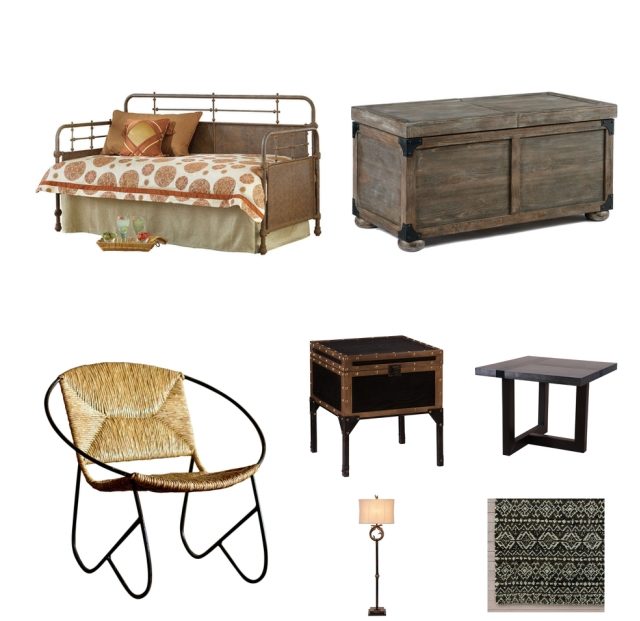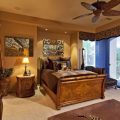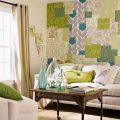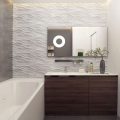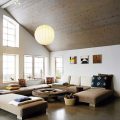
Rustic style in the interior: photos and how to make yourself
The style name comes from the French word,translated as “rough”, “simple”, “rural”, “rural”, “uncouth”. However, the rustic is far from the familiar village interiors in the post-socialist countries, American or English country, on the one hand, and modern minimalism, on the other.  This style is the personification of nature,naturalness and simplicity, so you will not find in the rustic interior of household and electronic retro-technology, vintage fittings with its complex forms and all that. There is no bright, colorful decor in the form of colorful wallpaper, brightly painted walls and textiles such as knitted napkins, macrame, lace curtains, bright tablecloths with fringe, carpets, carpets and tracks with bright ornamentation.
This style is the personification of nature,naturalness and simplicity, so you will not find in the rustic interior of household and electronic retro-technology, vintage fittings with its complex forms and all that. There is no bright, colorful decor in the form of colorful wallpaper, brightly painted walls and textiles such as knitted napkins, macrame, lace curtains, bright tablecloths with fringe, carpets, carpets and tracks with bright ornamentation. 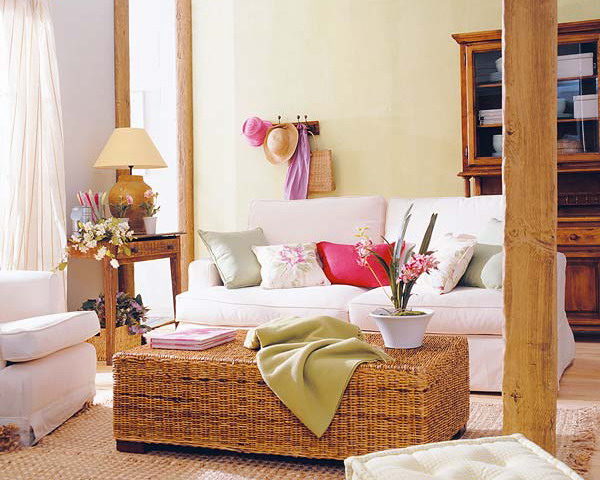 Brilliant, glossy details and surfaces,metal, colored and stained glass - all this is better reserved for another style. How to make a rustic style in the interior? Below are the main components of this style. Please note that many details of the rustic style can be done by hand; reference is given to good master classes.
Brilliant, glossy details and surfaces,metal, colored and stained glass - all this is better reserved for another style. How to make a rustic style in the interior? Below are the main components of this style. Please note that many details of the rustic style can be done by hand; reference is given to good master classes. 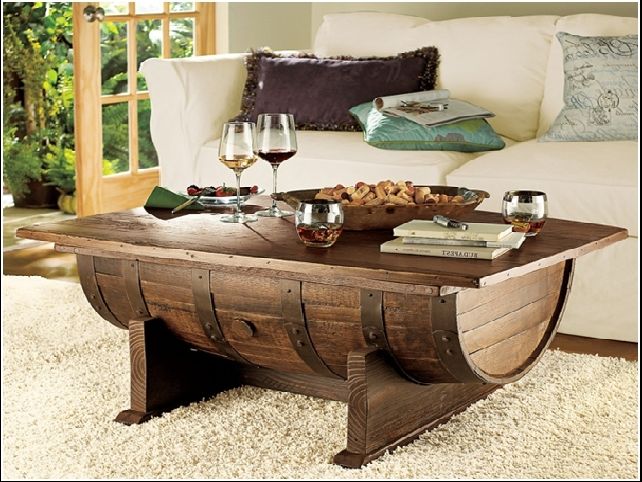

 The content of the article:
The content of the article:
Material
Rustik "took" stone and wood from nature, andIt is natural, but not exotic and expensive. Valuable wood, premium wood or imitation will look foreign. No need to carefully process the wood, try to get rid of knots, cracks, irregularities, wormholes, traces of the grinding machine, sandpaper or planer, uneven chips, a real wooden figure.
- You can use scrap materials and recyclables: old boards, slats,
- already part of other furniture, worn doors and shelves.
- looks great.
Wood can be used almost everywhere: for window frames, ceiling, beams and floor, furniture, decor, doors, wall cladding, railings. Natural tree trunks will look especially good as vertical supports or railings. Returning to the windows: ordinary plastic windows are unlikely to fit into the rustic, preference should be given to wooden double-glazed windows. Any glass decor looks good and sophisticated - here you can do it yourself. 

 Stone is the second most important materialnatural stone - limestone, quartz, sandstone, pebbles, crushed stone. No expensive shiny and polished materials such as marble, granite, onyx - only rough, uncured stone, which can serve as a floor covering, wall covering, sink or decorative element. The shell rock or any shell products, for example, are also appropriate. Less common brick, mostly aged, clumsily folded, shabby fireplace or wall. If you have such a wall - read the material.
Stone is the second most important materialnatural stone - limestone, quartz, sandstone, pebbles, crushed stone. No expensive shiny and polished materials such as marble, granite, onyx - only rough, uncured stone, which can serve as a floor covering, wall covering, sink or decorative element. The shell rock or any shell products, for example, are also appropriate. Less common brick, mostly aged, clumsily folded, shabby fireplace or wall. If you have such a wall - read the material. 


 Textiles Do not do without textiles in a residential area. For rustic it will be natural, coarse, preferably home-woven fabrics of flax and cotton in muted shades without bright patterns, embroidery and prints.
Textiles Do not do without textiles in a residential area. For rustic it will be natural, coarse, preferably home-woven fabrics of flax and cotton in muted shades without bright patterns, embroidery and prints. 



Color spectrum
Rustik does not differ in brightness and variety of colors:
- these are mainly natural shades of wood, sand, earth, stone and dry vegetation plus the classic white, gray or black.
- Dim shades of red, yellow, marsh will help bring a little variety to the interior.
But in choosing the color of a tree or a stone, you can not limit yourself:
- any color from light to dark,
- except perhaps rose and mahogany.



Furniture
The furniture, as a rule, has a simple "uncouth" look, as if it was hastily knotted out of tucked materials.
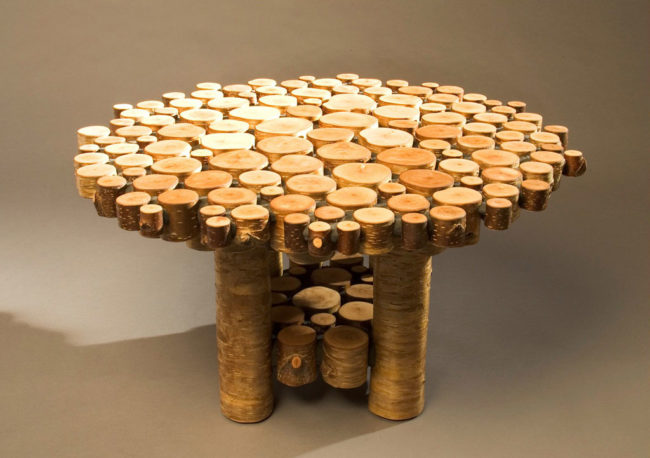

Equipment
Rustic interior is not very tolerant to any technology, so what can be better disguised: a TV for a picture (or make shutters for it), a refrigerator for a wooden cupboard, etc.
Decor
The decor in the rustic interior is designed to support the general idea of closeness to nature and simplicity and at the same time to balance the rudeness of the main elements.




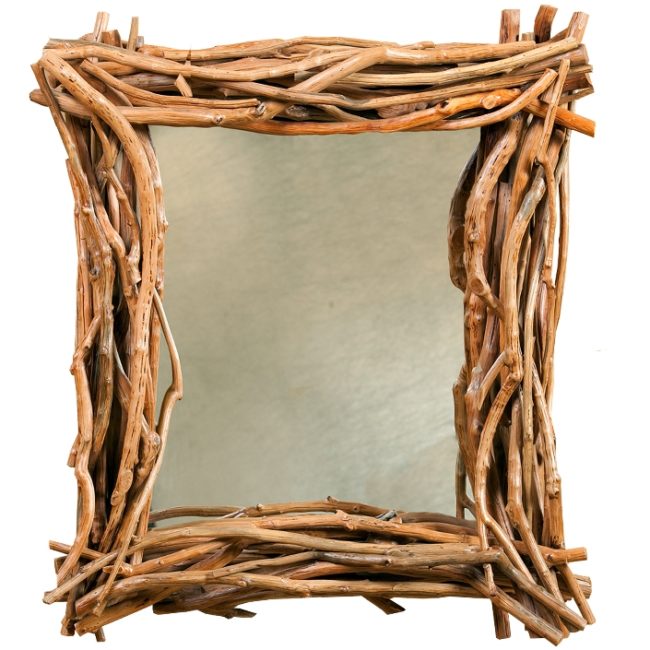 How to make such stylish - in this article, detailed masters. And also how - read here.
How to make such stylish - in this article, detailed masters. And also how - read here. 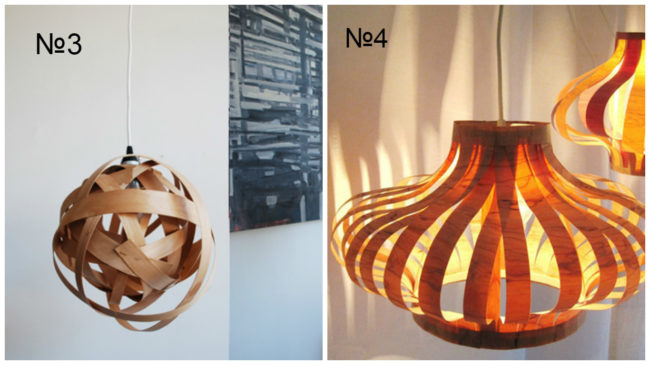 Wooden chandeliers and lamps will perfectly complement the rustic style:
Wooden chandeliers and lamps will perfectly complement the rustic style: 

 Very elegant and elegant look in rustic-style candlesticks from the old log -
Very elegant and elegant look in rustic-style candlesticks from the old log - 
Forms between brutality and elegance
Creating a rustic style, it is important not to overdo it with the coarseness of forms, which can turn a room into a barn. Decorative things will help to balance it:
- rounded vases and figurines,
- musical instruments,
- paintings and ornamental plants.
TIP: A combination of rough and soft forms: flat ceiling - rough, uncooked beams, rough wooden frames - smooth window sills, timbered walls - more simple, smooth forms of furniture, smooth walls - rough furniture. 

Rustic style rules
As follows from the above, create a realRustic interior is not so easy. Designers offer modern rustic-style to those who strive for naturalness, but are not ready to abandon modernity. It differs from classical rustic in the following features:
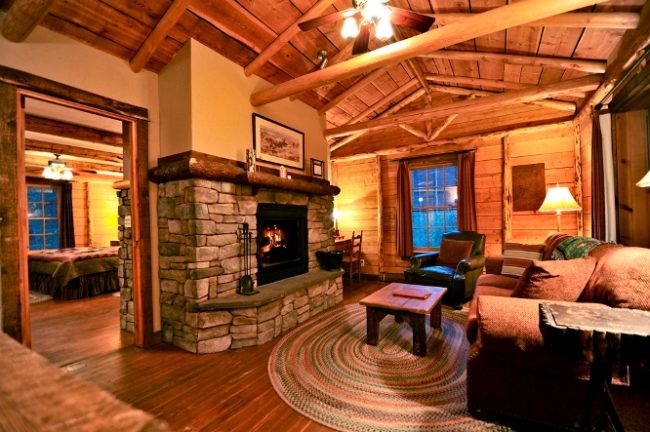
Rustic Tips
Despite the apparent simplicity and simplicityforms, the reconstruction of the style of rustic in the interior will require enough effort, time and money. Tip 1: The cost of furniture. It’s good if you are ready and can make furniture in rustic style yourself, otherwise you will have to pay a tidy sum for individual orders, because such furniture cannot be found in stores. Tip 2: Appliances for the home, which should not look like a foreign spot in the overall picture. Tip 3: Rustic is more suitable for private country houses and in the country, to realize it in a city apartment is quite problematic. To begin to recreate the interior in the style of rustic should only be weighed the pros and cons.

